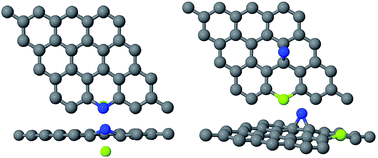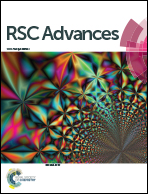Fine tuning the band-gap of graphene by atomic and molecular doping: a density functional theory study
Abstract
First-principles density functional theory (DFT) based calculations were carried out to investigate the structural and electronic properties of beryllium and nitrogen co-doped and BeN/BeO molecules-doped graphene systems. The basic focus was on how the band-gap could be fine-tuned with concentration and replacement/site(s) variations. It was interesting to note that the increase in doping concentration of this hetero combination of electrons (N) and holes (Be) into the graphene systems did not always lead to a higher band-gap. The insertion of holes and electrons at hetero sites, simultaneously, leads to an increase in the energy-gap. However, if the replacement combination of sites comprises of the same rectangular, or hexagonal, ones, then the band-gap may decrease with increasing impurity concentrations. Additionally, the insertion of BeO molecule(s) was also position dependent and the band-gap enhancement was not always proportional to the density of doped BeO molecules. Finally, our results suggested that with control of the dopant position, very fine-tuning of the band-gap is possible. This makes graphene a favorable material for utilization in diverse electronic device applications.


 Please wait while we load your content...
Please wait while we load your content...